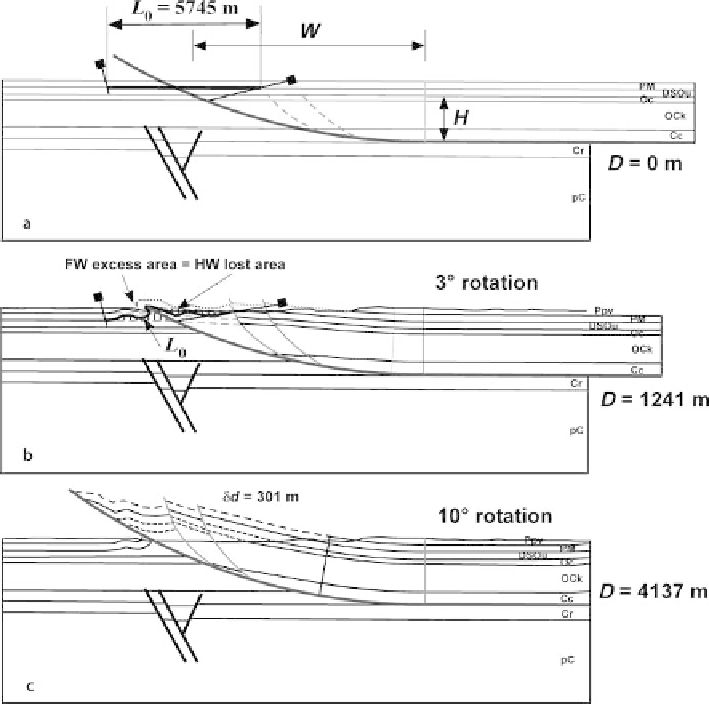Geology Reference
In-Depth Information
placement of the hinterland block will be approximately constant, which requires that
the trailing edge remain vertical in the deformed state. This leads to a second reason
why perfect rigid-block rotation with the geometry of Fig. 11.27 is unlikely: it is not
length or area balanced with a vertical pin line. The length imbalance is
d
(Eq. 11.46).
The area imbalance is equal to the area,
A
, of the triangle bounded by
H
and
δ
δ
d
,
A=(
H
2
tan
∆
) / 2 .
(11.47)
Thus it is unlikely that the hangingwall will maintain constant length and thickness, but
instead it is likely to deform internally in some fashion in order to remain locally balanced.
Fig. 11.28.
Model-based sequential restoration of Wills Valley anticline.
D:
displacement on lower de-
tachment.
a
Undeformed.
b
After 3° rotation of hangingwall, just before master fault breaks across PM.
Shading
shows area transferred from hangingwall to footwall.
c
After 10° rotation of hangingwall into
present day configuration. Everything above the erosion surface is schematic, based on the model

